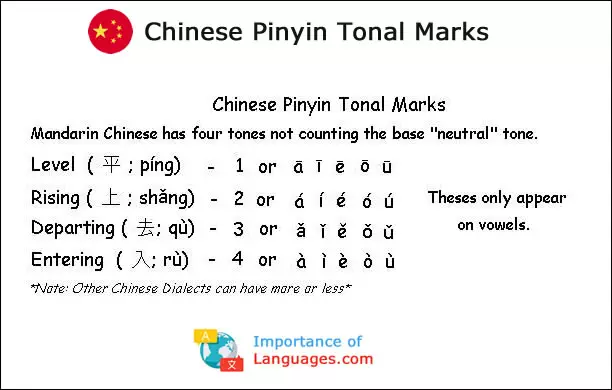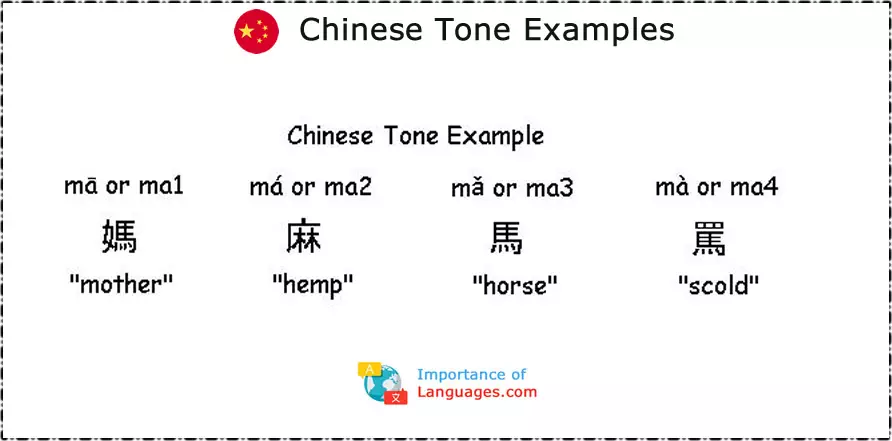Because Chinese doesn’t have a real alphabet in the standard sense. Chinese Pinyin is a system used to teach Chinese Characters into romanized Latin script that means “spelled sound”. Each Syllable is made up of Sheng and a yun. Sheng is the consonant that begins the syllable• Yun follows the Sheng and is usually a vowel sound. It’ll take a while to learn Chinese Characters since there are more than four hundred exist in the Chinese language. And that doesn’t count the various tonal variations. The overall total of possible combinations leaves Mandarin Chinese with total of 1600(400 base combinations characters with 4 tones each) unique syllables.
The standard Chinese dialect of Mandarin Chinese has four tonal marks that radically change the meaning of the word and crucial when you learn Chinese Pinyin. Theses are indicated by marks over the vowels or by using numbers along with the Chinese Pinyin.
Pronouncing Chinese Tones
Level – This tone is pronounced high and level. Almost monotone.
Rising – This tone has a increase in pitch.
Departing – This tone sounds like it’s “dipping”. Falls and Rises again.
Entering – This tone starts out high then drops in tone.

When trying to learn Chinese Pinyin. You must pay attention to Tonal marks because they can change the word from one meaning to a whole completely different meaning. Example of how changing the tonal marks changes the meaning of the Chinese Character.

I put together a directory for you to start to learn Chinese Pinyin characters. Sorted by tone alphabetically. I also split “c”, “s”, and “z” each into separate pages to cut down on the size of the images and make it more organized.
Learn Chinese Pinyin is extremely important when it comes to learning to write and read Chinese Characters. So make sure to practice pronouncing and writing Chinese Pinyin whenever you can. As many times as you can.
Three Ways To Make Learning Chinese Script Easier
Learning Chinese script isn’t the easiest thing in the world. Having had friends who studied Chinese, in fact, I know it’s a downright challenge.
The difficult thing about Chinese script is it consists of a multitude of complex characters, each of which represents a unique combination of sound and meaning. Know how you only need to memorize 24 letters of the alphabet and 10 numeric digits to read an English book with some amount of competency? With Chinese, you need to commit a minimum of 4,000 hanzi characters to memory to read Modern Standard Chinese.
Here are a few ways to help ease the learning process:
- Learn what the individual character components represent. Most Chinese characters are made up of components that stand for either physical things or abstract concepts. Learning what each of those components stand for can help you memorize and identify characters much easier.
- Use flash cards to help you memorize. On one side of each card, write the Chinese character. On the other, write its pronunciation, meaning and a sample word that uses it. Check these flash cards regularly — you’ll need plenty of work to get to that 4,000 minimum.
- Keep notes. On your journal, write down new characters and components you encounter, along with their meaning. This should make it easier to see patterns, allowing you to competently guess the meaning of new characters you come across.
Interested in further study into Chinese or confused on where to start? I recommend reading our Chinese Beginners Guide
